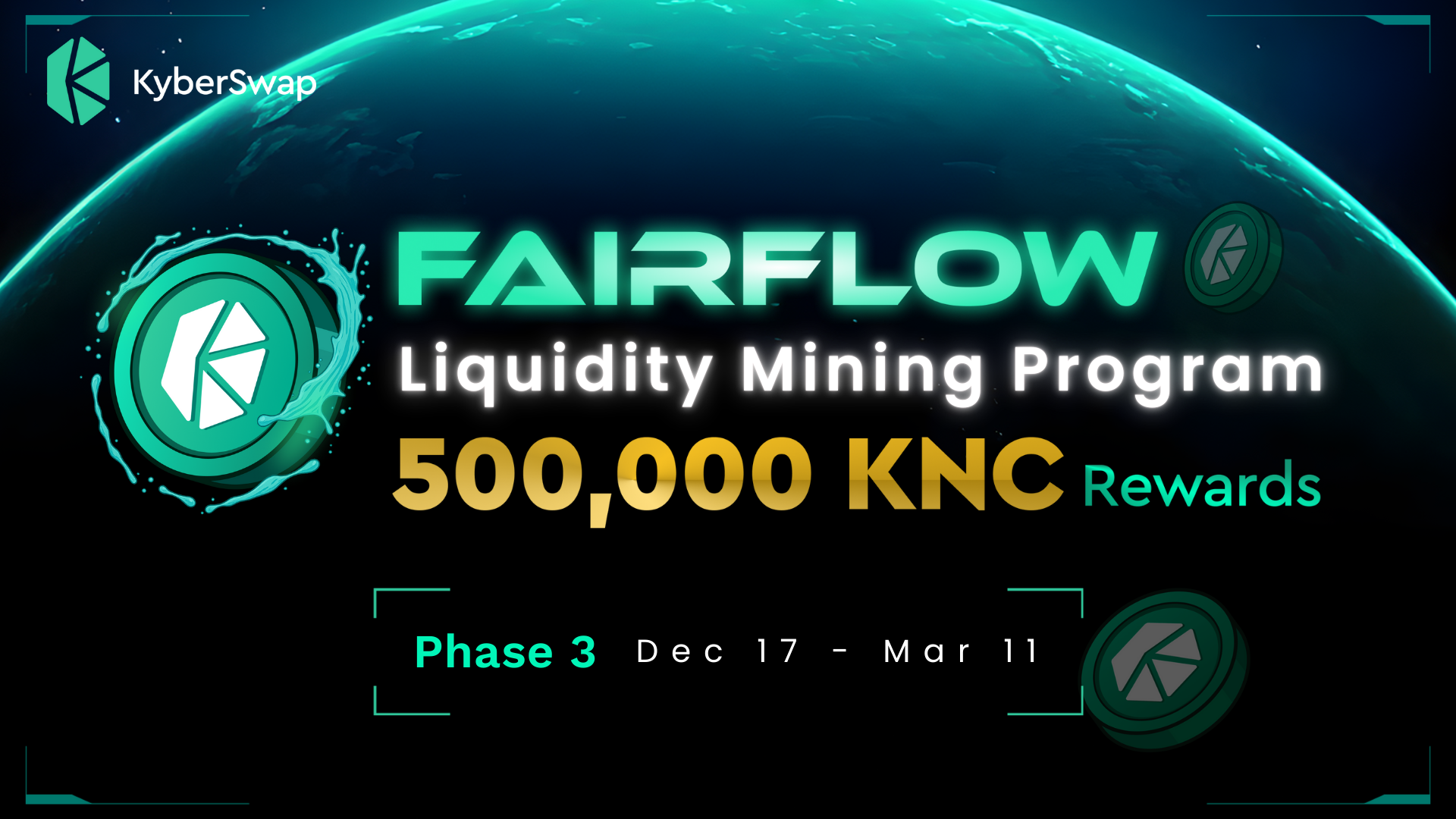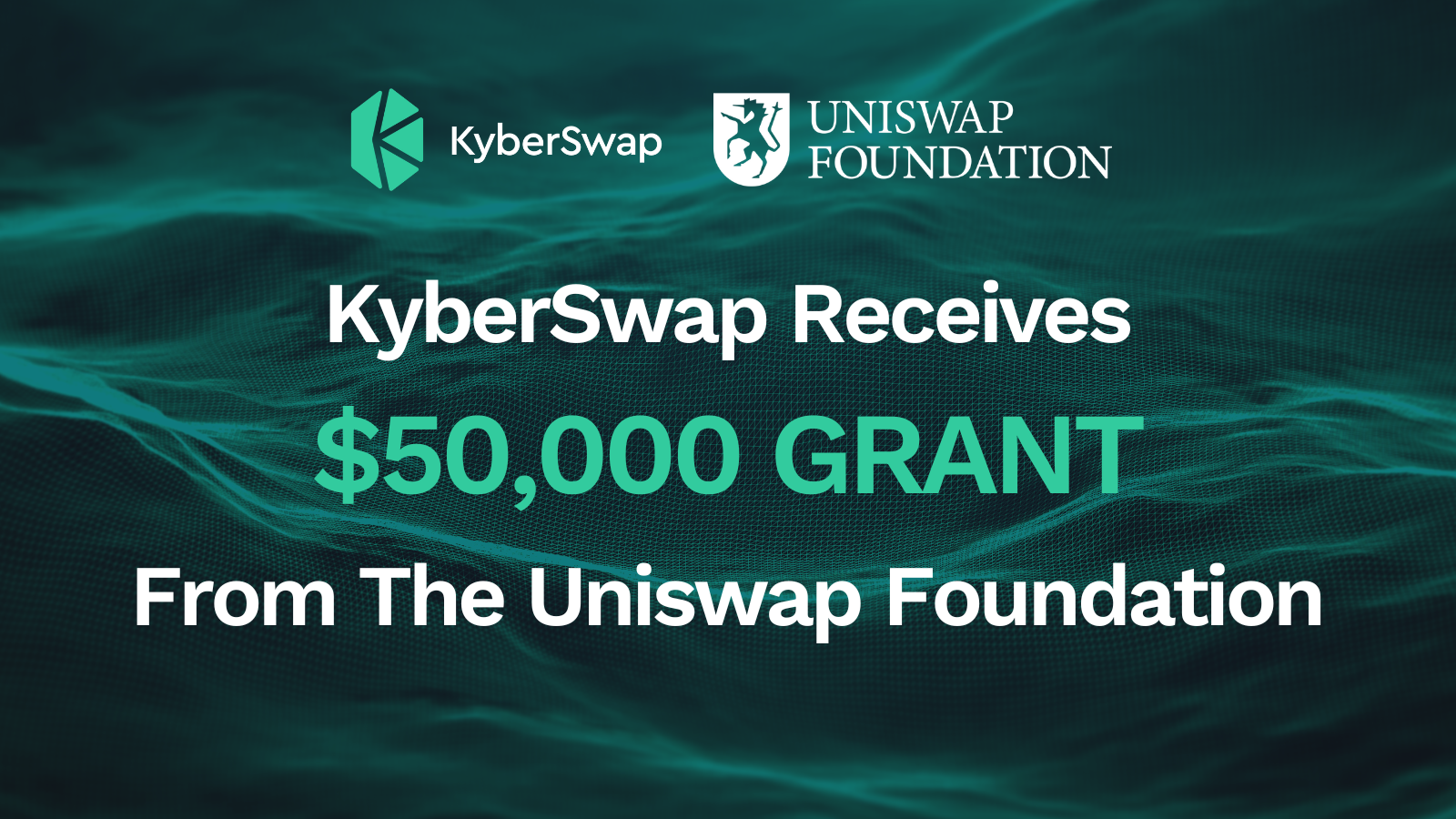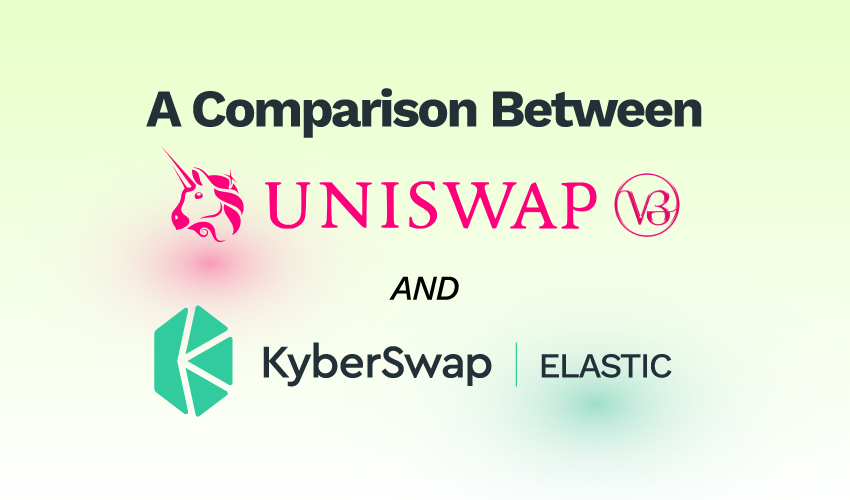
Since the release of our new protocol, KyberSwap Elastic, we’ve received some commonly asked questions we’d like to address, generally regarding comparison between KyberSwap Elastic and Uniswap V3 protocol.
In the interest of openness and transparency, which are two of our core values at Kyber, we would like to address these queries.
First up:
1) Uniswap was first to tackle capital efficiency with Uniswap V3.
No.
Uniswap V3’s whitepaper was published in March 2021, highlighting concentrated liquidity, flexible fees, etc as ways to improve capital efficiency.
KyberSwap Classic’s (formerly known as KyberDMM) whitepaper was published in Feb 2021, focusing on our Dynamic Market Maker protocol and Amplification factor as methods to boost capital efficiency.
Our methods are different on the surface, but our end goals are equivalent. To improve capital efficiency and mitigate the impact of impermanent loss for our LPs.
Capital efficiency is not a new concept. Other DEXs have their own methods and protocols to increase capital efficiency for their users, such as Curve Finance which also utilizes concentrated liquidity. Kyber has been a pioneer in DeFi just like these projects and we deeply respect their innovations and contributions to the space.
2) Is KyberSwap Elastic a fork of Uniswap V3?
Nope!
For a very simple reason.
Uniswap V3 source code is under Business Source License 1.1, meaning it is not fully open source. This agreement incorporates copyright law and allows Uniswap governance to restrict unauthorised commercialisation of an entity’s source code for two years. Seeing as Uniswap V3 was announced in 2021, the earliest a dApp can fork Uniswap’s code would only be sometime in 2023.
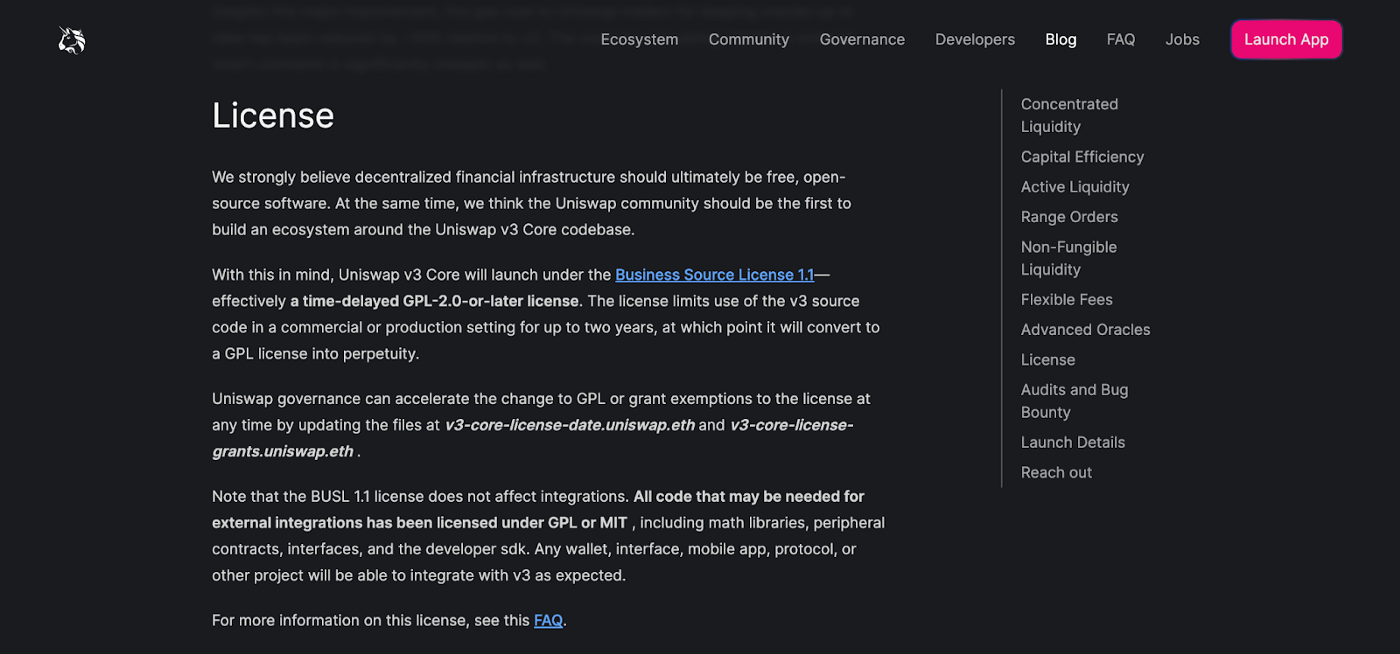
https://uniswap.org/blog/uniswap-v3
So, what is KyberSwap Elastic?
KyberSwap Elastic was developed with our own original code.
It is similar to Uniswap V3 in a sense that both are tick-based AMMs with customizable price ranges, and use NFTs to represent liquidity positions.
That’s all.
KyberSwap Elastic varies from Uniswap V3 in several ways. Let’s review them:
KyberSwap Elastic and Uniswap V3 protocol are different in their underlying technologies. Uniswap V3 controls different positions in a pool while Elastic can control different AMM curves in a pool (each AMM curve can have multiple positions).
KyberSwap Elastic’s protocol maintains more than 1 AMM curve as the same time, in the same smart contract. In Elastic, we have two curves: The Investment Curve and the Re-investment Curve. However, the protocol allows control over multiple curves.
It is this key difference in our technology that enables Elastic’s Fee Compoundability, which allows liquidity providers to earn more.
Another key difference is in our Anti JIT / Snipe protection, which is something Uniswap V3 currently does not offer. KyberSwap Elastic protects our Liquidity Providers’ earnings by implementing a very short locking / vesting period (1–2 blocks)
To sum up, here are the 2 core differences between KyberSwap Elastic and Uniswap V3’s protocol:
1) Compoundability

Elastic Vs Uniswap V3: Compoundability
What Does This Mean?
The Reinvestment Curve adds convenience for Liquidity Providers as you don’t have to add liquidity manually back into the pool. Separately compounding fees allows LPs to earn more (Fees are accumulated on top of compounded fees)
Compounding is the process of generating earning on an asset’s reinvested earnings.
For example, Kelvin adds $1,000 into a KyberSwap Elastic pool. After some time, he earns $100 in fees. His fees are automatically reinvested in the pool, so now he is earning fees based on a position of $1,100 (not the original position of $1,000).
However, do note that the old Uniswap V2 does compound fees but into your original position. Similar to KyberSwap Classic.
2) JIT / Snipe Protection

Elastic Vs Uniswap V3: JIT/ Snipe Protection
What Does This Mean?
In a JIT attack, a sniper will detect a large swap incoming from the mempool. So he can “sandwich” this swap with 2 transactions to add and remove liquidity at a very narrow range within the same block. In doing so, the sniper takes almost all the fees generated in the swap while perfectly controlling the Impermanent Loss.
KyberSwap Elastic’s JIT / Snipe Protection locks our LPs trading fee earnings and quickly vests them based on the LP’s duration of liquidity contribution. So users adding liquidity to KyberSwap Elastic will have their earnings better protected and enjoy a better peace of mind.
Along with these core differences, KyberSwap Elastic also has several additional features designed to provide convenience and flexibility to our LPs.
Multiple Fee Tiers
Uniswap V3 offers multiple fee tiers (0.05%, 0.30%, 1.00% and 0.01% on selected chains) so LPs have the option to tailor their margins to their token pair’s expected volatility.
KyberSwap Elastic provides multiple fee tiers for the same reason, and we made more tiers (0.008%, 0.01%, 0.04%, 0.3% and 1% on all 11 chains) available to give our LPs further options to choose from. More tiers equates to greater flexibility of choice for our LPs based on individual risk appetites, token pair, etc. We intend to add more fee tiers in future.
Connectivity
KyberSwap Elastic is currently deployed on 11 chains (KyberSwap Classic is deployed on 12 chains). This gives LPs and traders increased flexibility, accessibility and opportunity to utilise KyberSwap on whichever ecosystem they choose.
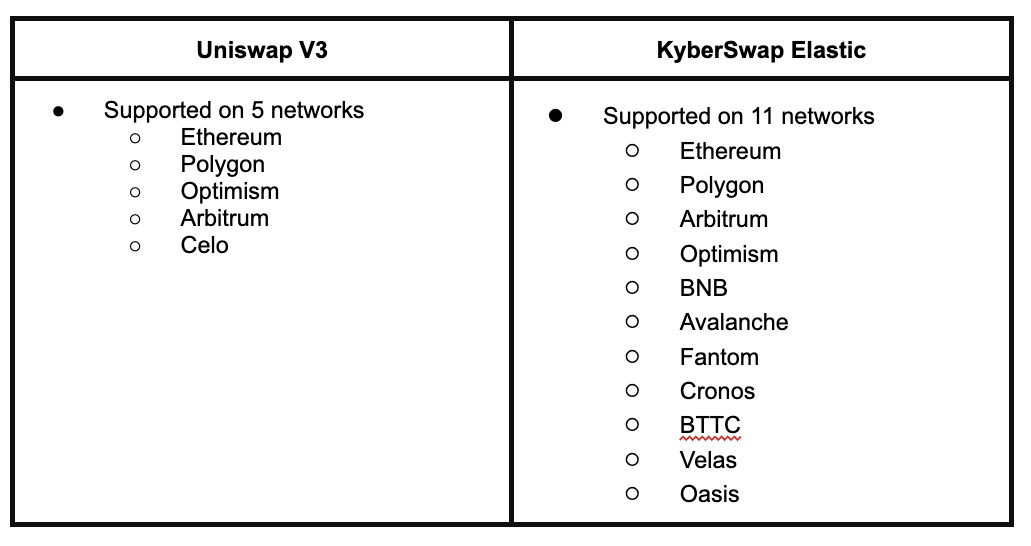
Conclusion
We hope this provides clarification and further insight into our new KyberSwap Elastic protocol. Our decision behind building KyberSwap Elastic was not to be competitive, but to enable collaboration in the DeFi space.
As mentioned in the beginning of this article, Uniswap V3’s source code is licensed, limiting the source code in a commercial or production setting for up to 2 years. The Uniswap governance can vote to change or make exceptions to this license, but effectively this restricts any other dApp from building on their code.
And we respect the Uniswap team’s choice in doing so, as well as their continued innovation and contribution to the DeFi space!
In Kyber, our values lie in being transparent and open-hearted — and this relates to our product inherently being open source so dApps can build on top of it to build a better DeFi, together.
We believe one of the best aspects in blockchain is its open source and innovative nature, allowing dApps to build on one another to build a better DeFi that benefits users.
Following our vision to make DeFi easy, accessible and rewarding for all, we believe in sharing our technology when it can benefit DeFi users. As such, we chose to develop our KyberSwap Elastic code as open source and we welcome developers and other projects to fork it.
To all builders in DeFi with our blessing — KyberSwap Elastic Docs: Smart Contracts
Onwards and Upwards!
